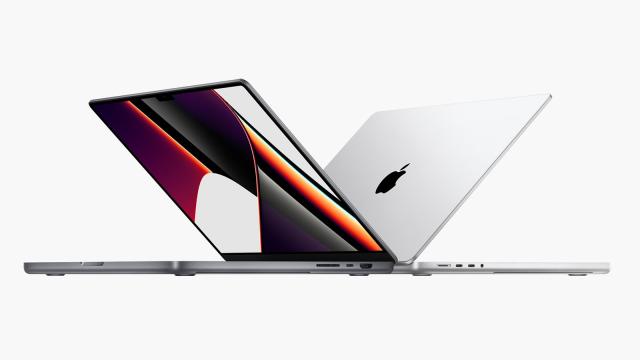The MacBook lineup has just expanded with the new 14-inch and 16-inch MacBook Pros and the newest M2 MacBook Air and M2 13-inch MacBook Pro available to buy. They all come with various configurations available when you buy them directly from Apple. So which of these next-gen Apple laptops is the one for you?
The newest Pro laptops are, as expected, a substantial step up from the MacBook Air in power and in price. What you need to decide is whether the extra investment is worth it and unless you’re working on seriously demanding tasks, it might not be.
Here are the differences between each MacBook you can buy right now, and how to pick which one is the best for you.
MacBook Air (2020)
Launched in November 2020, the MacBook Air was the first of Apple’s MacBook lineup to come with one of Apple’s own processors inside, in this case, the M1.
The M1’s 8-core CPU is up to 3.5x faster than the previous generation MacBook Air running on an Intel chip, according to Apple. It’s joined by a 7-core or 8-core GPU on the same M1 system-on-chip, depending on the configuration you go for, and a 16-core Neural Engine.
The Air is the slimmest, smallest MacBook Apple makes right now, with a 13.3-inch, 2560 x 1600 pixel display (227 pixels per inch) that offers a maximum brightness of 400 nits. The overall dimensions are 11.97 inches x 8.36 inches x 0.63 inches, and the laptop weighs in at 1 kg.
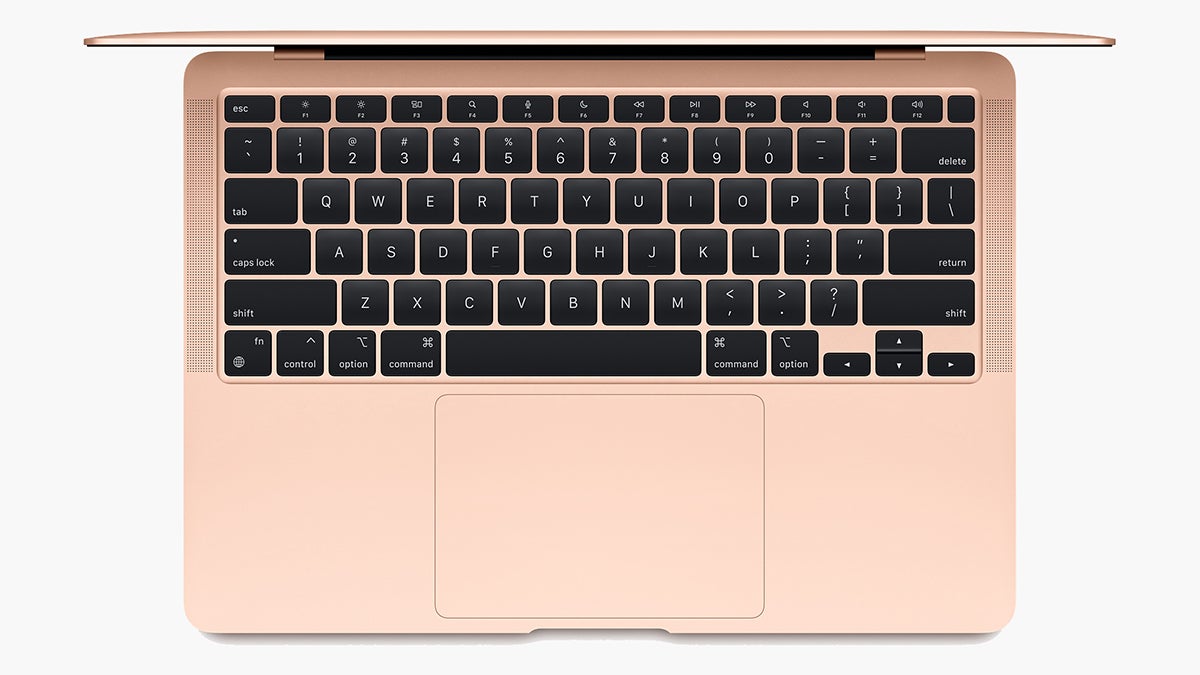
With that size, there’s only room for one headphone jack and two Thunderbolt 3/USB-C ports which may be one reason why the MacBook Air may not be the right MacBook for you.
The laptop can support one external display (up to a 6K resolution and 60Hz refresh rate). On the audio side, you’ve got two stereo speakers here with Dolby Atmos support.
Other specs worth knowing about are the support for Wi-Fi 6 and the 720p integrated webcam built into the bezels around the display. Apple claims that you can get up to 18 hours of battery life from the MacBook Air, as long as you’re not pushing it too hard, and its lengthy battery life was confirmed by our review.
In terms of colours, there’s the standard space grey and silver, but also a gold option that’s unique to the Air.
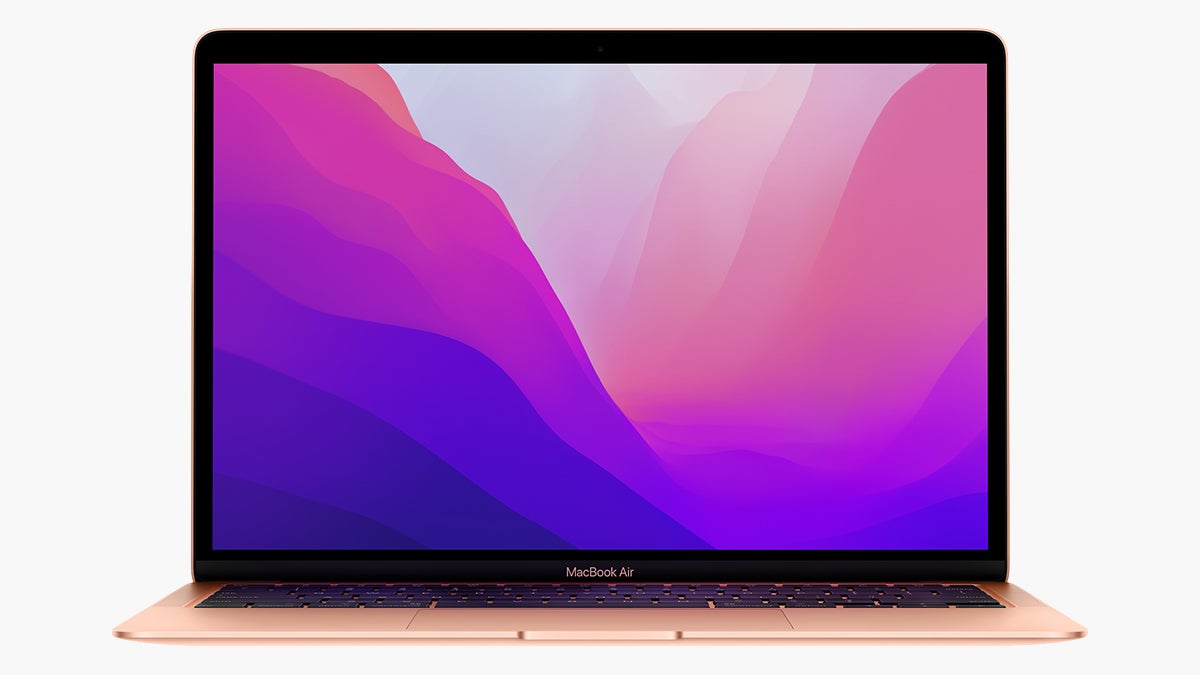
There are two starting configurations to pick from: The cheapest $AU1,499 option has the M1 chip with the 7-core GPU, 8GB of RAM, and 256GB of storage. You can go up to 16GB of RAM (add $AU300), as well as increase the internal storage to 512GB (add $AU300), 1TB (add $AU600), or 2TB (add $AU1,200). The most expensive configuration at this level will set you back $AU2,999.
The other configuration starts at $AU1,849, which gets you the M1 chip with the 8-core GPU, 8GB of RAM, and 512GB of internal storage. If you want to boost the specs, you can get 16GB of RAM for an extra $AU300, and choose from a couple of storage upgrades: 1TB for an additional $AU300 and 2TB for an additional $AU900. Go for the 16GB and 2TB combination and you’re paying $AU3,049.
MacBook Air (2022)
The newest design of the MacBook Air is powered by Apple’s powerful M2 chip and will be available to purchase from the 15th July, 2022.
A notable point of difference between MacBook Air’s and MacBook Pro’s is the ultra-thin design and the newest redesign comes in at around 1.24 kg and 1.13 cm thin. Making it a little bit heavier than the 2020 MacBook Air. The weight is what makes the MacBook Air an attractive sell, as it’s more portable and won’t weigh down your bag if you’re taking it to university, college or work.
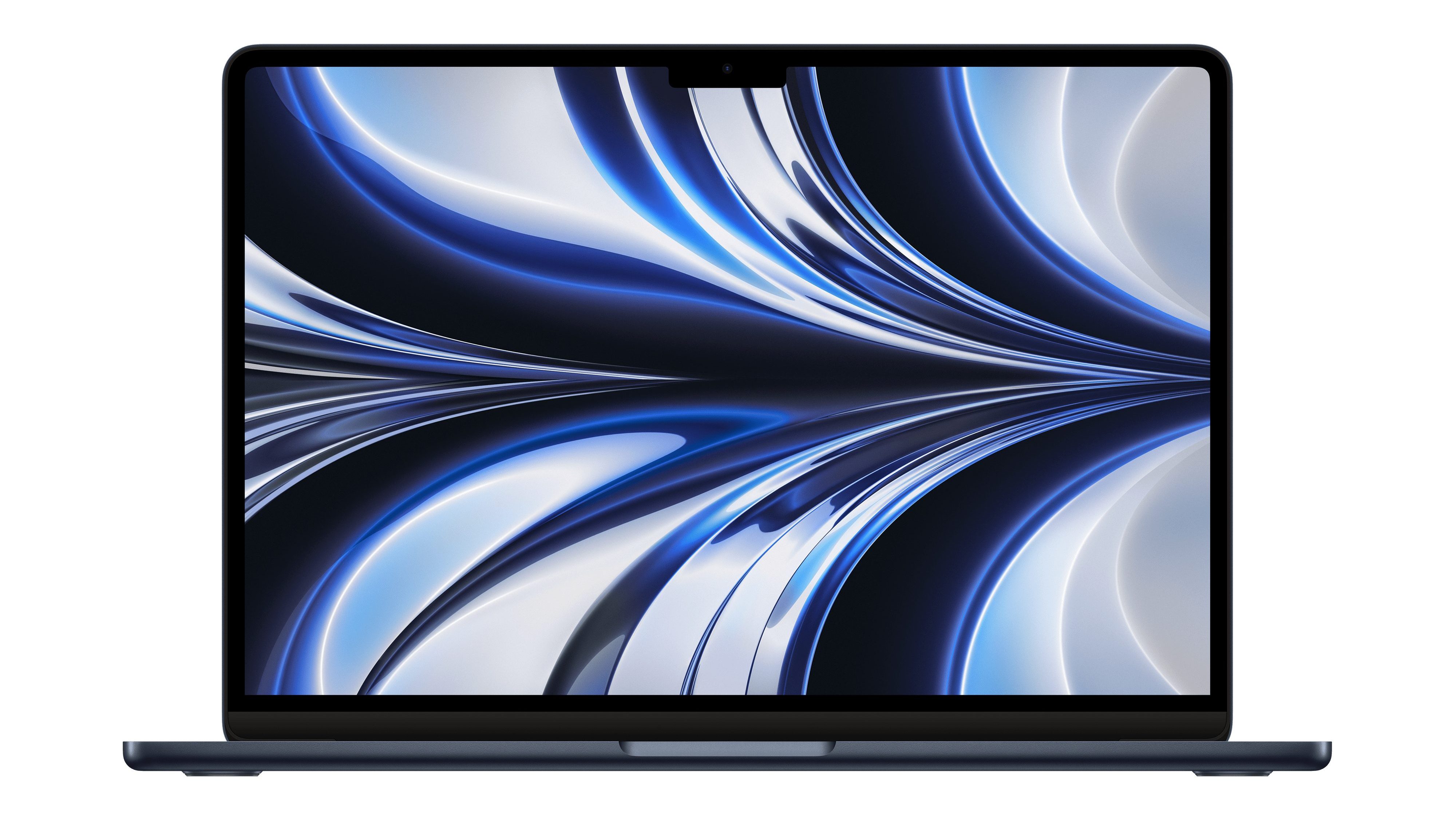
Because it’s powered by the M2 chip, the new MacBook Air comes without a fan so you don’t have to be distracted by the laptop whirling while you work on big tasks. Which is an incredible sell for people looking to edit and work with larger files like videos or animation with up to 10-core GPU.
An interesting addition to the MacBook Air is that it features 100 per cent recycled aluminium in its casing, according to Apple.
In terms of colour options, the newest MacBook Air comes in four finishes and comes with a matching MagSafe charging cable (MagSafe is back, woo). You can choose from midnight, space grey, silver and starlight.
With an 8-core CPU, the M2 MacBook Air runs up to 1.4 times faster than the M1 model and up to 15 times faster than Intel-based models. It’s also got an 18-hour battery life, the same as the M1 model. With universal control, if you’ve got an iPad you can use it as a second display and unlock your Mac with your Apple Watch.
If you’re working with a lot of videos or photos, you can play and edit streams of 4K and 8K ProRes videos, including 4K ProRes videos shot with an iPhone 13 Pro. The 13.6-inch Liquid Retina display is the biggest ever on MacBook Air and can support 1 billion colours with 500 nits of brightness. As for audio, the M2 Macbook Air is equipped with a four-speaker sound system with Spatial Audio, supported by Dolby Atmos.
The newest MacBook Air has Touch ID to make unlocking easier and a quick-release MagSafe power connecter, which some MacBook Pros don’t have. Because of the slim design, there is still only room for two Thunderbold ports and one headphone jack.
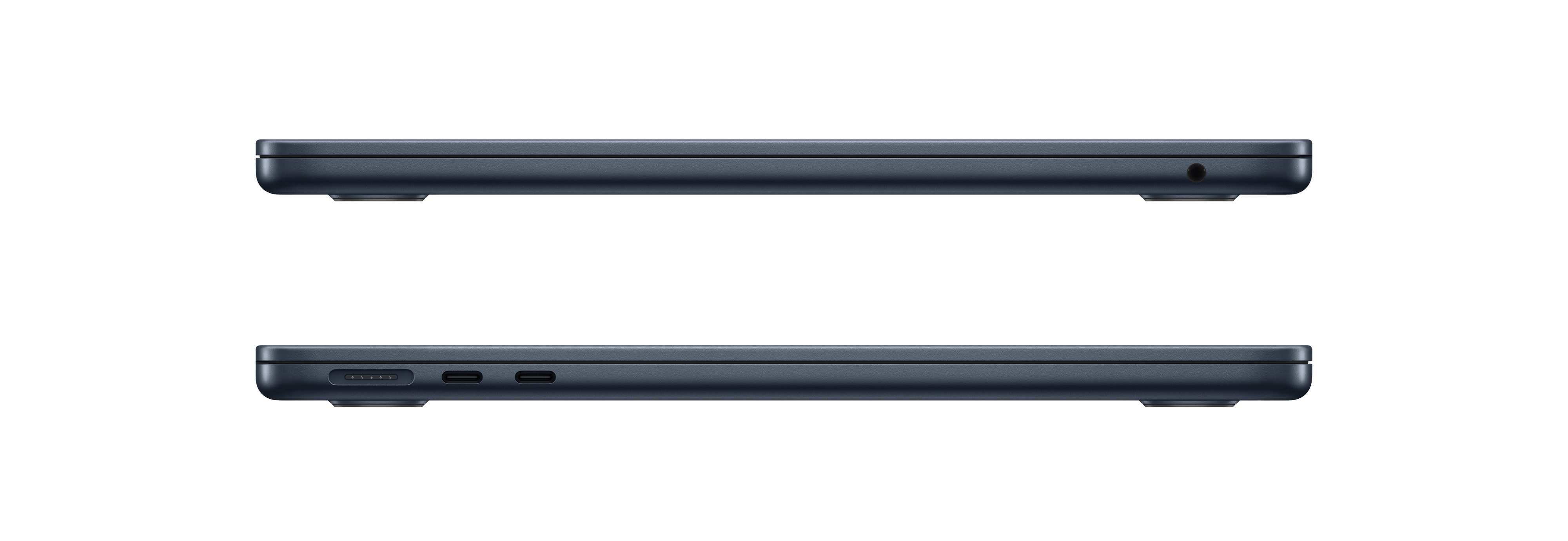
There are two starting configurations to pick from: The cheapest $AU1,899 option has the M2 chip with the 8-core GPU, 8GB of RAM and 256GB of storage. To upgrade to 16GB of RAM will cost you another $AU300 and 24GB will add $AU600. You can increase storage to 512GB (add $AU300), 1TB (add $AU600) or 2TB (add $AU1,200).
The most expensive configuration at this level will cost you $AU3,699. A pretty big jump from the fully upgraded M1 model.
The other configuration starts at $AU2,349, which will get you the M2 chip with 10-core GPU, 8GB of RAM and 512GB of storage. To boost the specs, you can get 16GB of RAM for an extra $AU300 and 24GB for an extra $AU600. For storage options, you can upgrade to 1TB for an additional $AU300 or 2TB for additional $AU900.
If you go for 24GB of RAM and 2TB of storage, you’ll end up paying $AU3,849.
13-inch MacBook Pro (2022)
The brand new MacBook Pro complicates your decision a bit. The 2022 13-inch MacBook Pro is powered by the new M2 chip, making it just as powerful as the 14-inch and 16-inch models.
With the M2 chip, the 13-inch MacBook Pro is 1.4 times faster than the previous M1 model with an 8-core CPU and 10-core GPU and 16-core Neural Engine. It’s worth noting that, unlike the MacBook Air, this laptop has active fan cooling, potentially enabling higher performance.
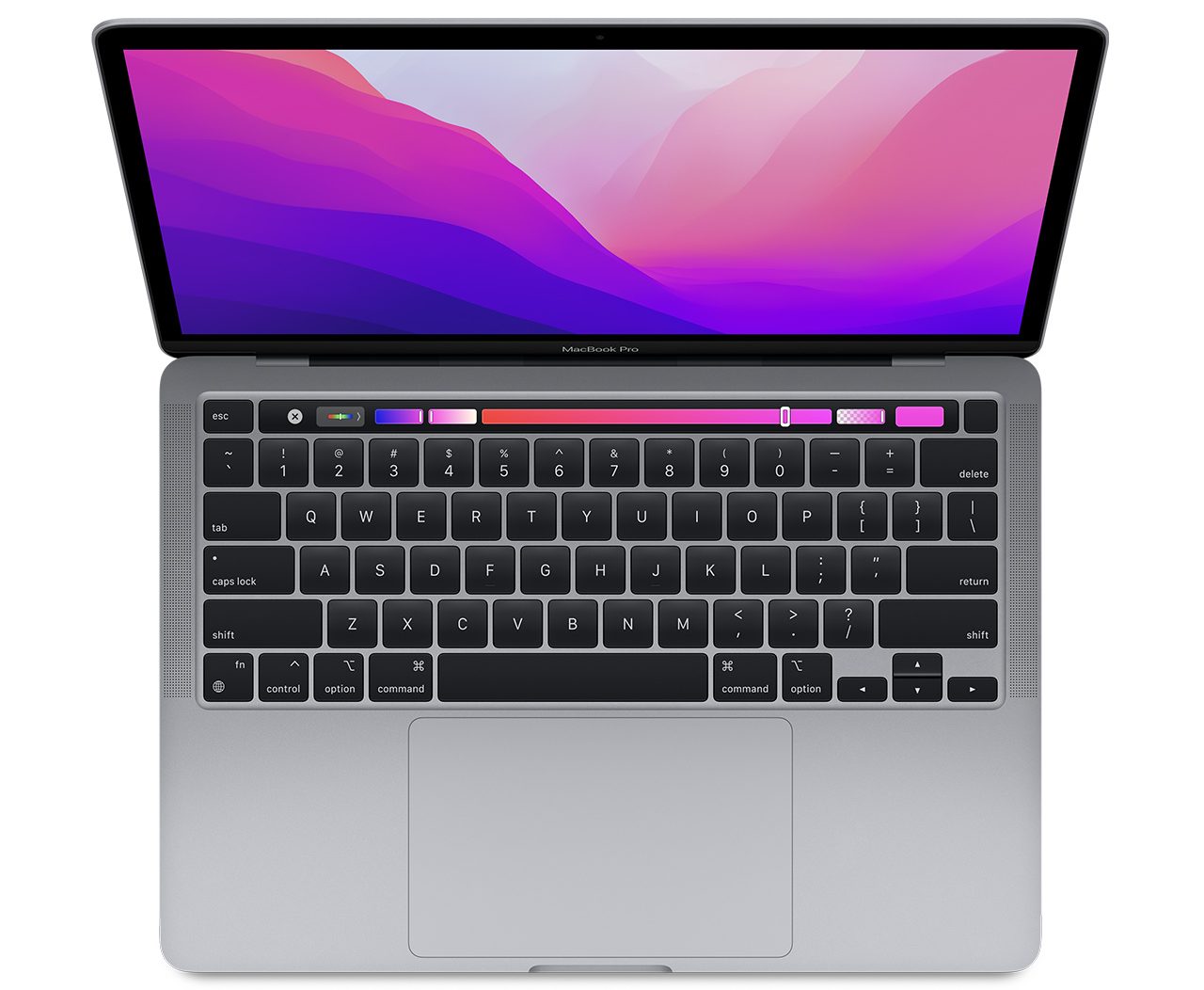
As with the MacBook Air, this MacBook Pro sports a 13.3-inch screen with a 2560 x 1600 pixel resolution (227 pixels per inch). The maximum brightness gets a boost to 500 nits though, while the dimensions are similar to the Air overall, just without the tapering: It measures 11.97 inches x 8.36 inches x 0.61 inches, and tips the scales at 1 kg.
The ports are a bit different from the MacBook Air, with a headphone jack and two Thunderbolt/USB 4 ports, and again one external display with up to a 6K resolution and 60Hz refresh rate can be powered.
You also get stereo speakers with Dolby Atmos support, and you also get the infamous Touch Bar above the keyboard. This is likely to be the last ever MacBook to sport the Touch Bar, so if you love that feature, this is probably the MacBook to buy.
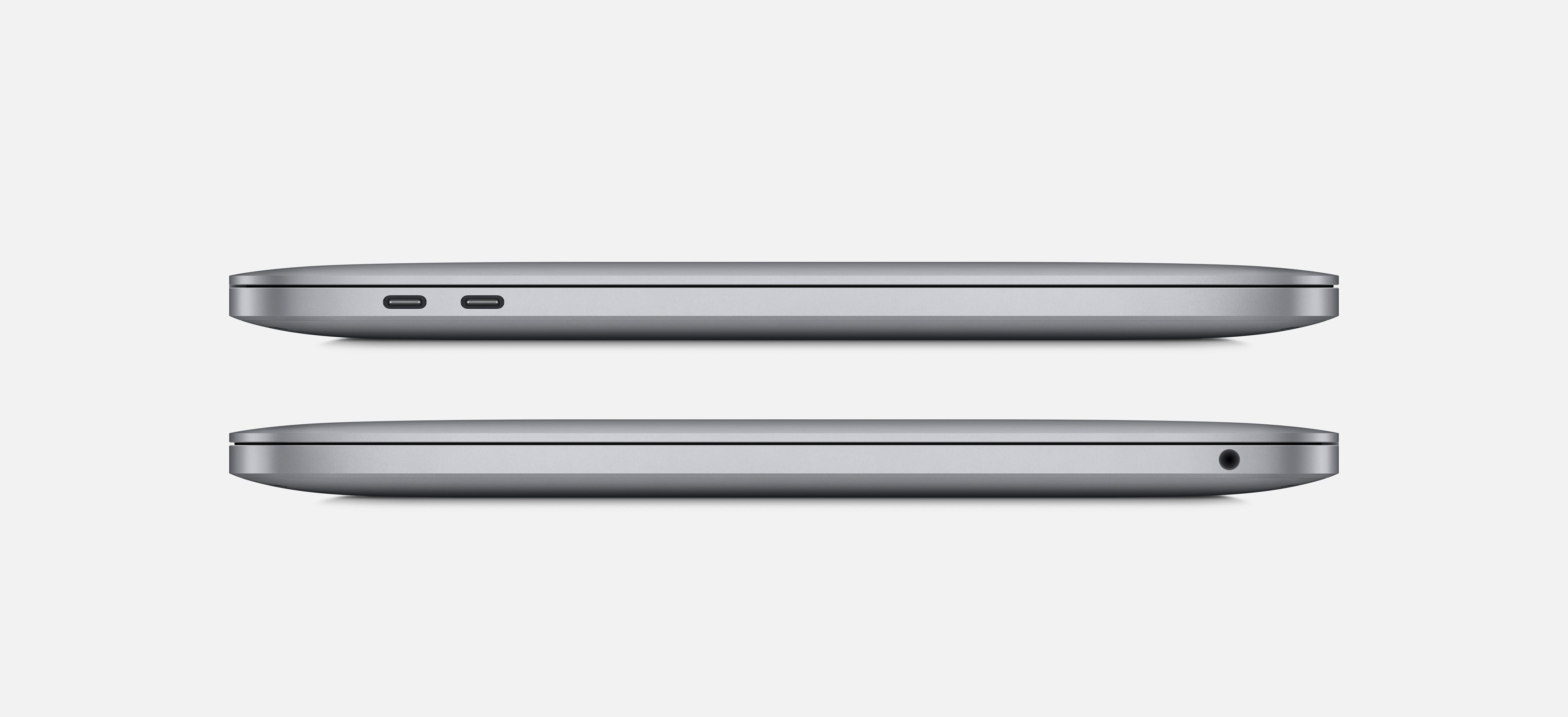
As with the MacBook Air, there’s Wi-Fi 6 and the 720p integrated webcam with no notch. Apple says that 20 hours of battery life between charges is possible with the 13-inch MacBook Pro, assuming you’re not going to be doing too much with it besides watching videos, so it’s another impressive performer in the battery department. As with all the Pro models, you can pick from space grey and silver.
You get two choices when you configure a 13-inch MacBook Pro through the Apple website: $AU1,999 for the model with 8GB of RAM and 256GB of internal storage, and $AU2,299 for the model with 8GB of RAM and 512GB of internal storage. Both models are otherwise the same and powered by the M2 chip with an 8-core GPU.
Click through on those configurations and you can up the RAM to 16GB for an additional $AU300 and 24GB for an added $AU600. Fitting the laptop with 512GB (on the 256GB model), 1TB, or 2TB of storage will cost an extra $AU300, $AU600, or $AU1,200 respectively. Do the maths on all of that and the top-end configuration comes out at $AU3,799, no matter which option you picked to begin with.
14-inch MacBook Pro (2021)
Although not 2022 models, these are serious laptops with serious price tags attached. Apart from the size, these two laptops (we’ll get to the 16-inch 2021 MacBook Pro next) are actually very similar in terms of their specs. The smaller 14-inch MacBook Pro can be had with either the M1 Pro chip (up to 10-core CPU, 16-core GPU, 16-core Neural Engine) or the M1 Max chip (10-core CPU, up to 32-core GPU, 16-core Neural Engine).
Apple says CPU performance is around 3.7x faster than the equivalent 13-inch Intel-based version that came before: Check out a stack of benchmarking stats here. The 14.2-inch, 3024 x 1964 screen runs at 254 pixels per inch and is capable of up to 1,600 nits peak brightness. When it comes to dimensions, the 14-inch model measures 12.31 inches x 8.71 inches x 0.61 inches and weighs 2 kg.
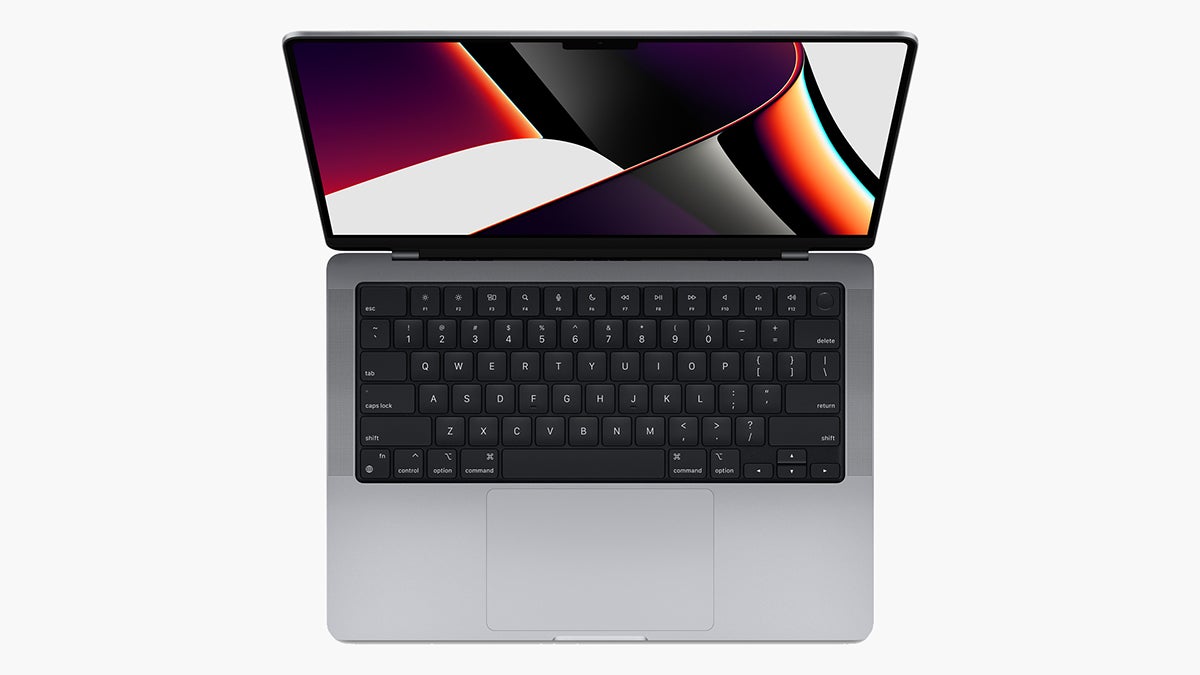
The extra ports are a good reason to pick the 14-inch over the 13-inch Pro. Besides the headphone jack you get an HDMI port, an SDXC card slot, a MagSafe port for charging and three Thunderbolt 4/USB-C ports. The M1 Pro can power two external displays (up to 6K/60Hz) while the M1 Max can run three external displays (up to 6K/60Hz) plus another 4K/60Hz screen too. There are six speakers with Dolby Atmos support this time around.
Space grey and silver are again the colour options, and there’s support for the latest Wi-Fi 6. What’s more, the Touch Bar has been ditched, and the webcam — sitting inside the new notch — gets upgraded to 1080p. According to Apple, you can get 17 hours of battery life from the 14-inch MacBook Pro, as long as you’re just watching video, though in our testing of a 14-inch Pro with M1 Max chip, the battery life was closer to 9 hours.
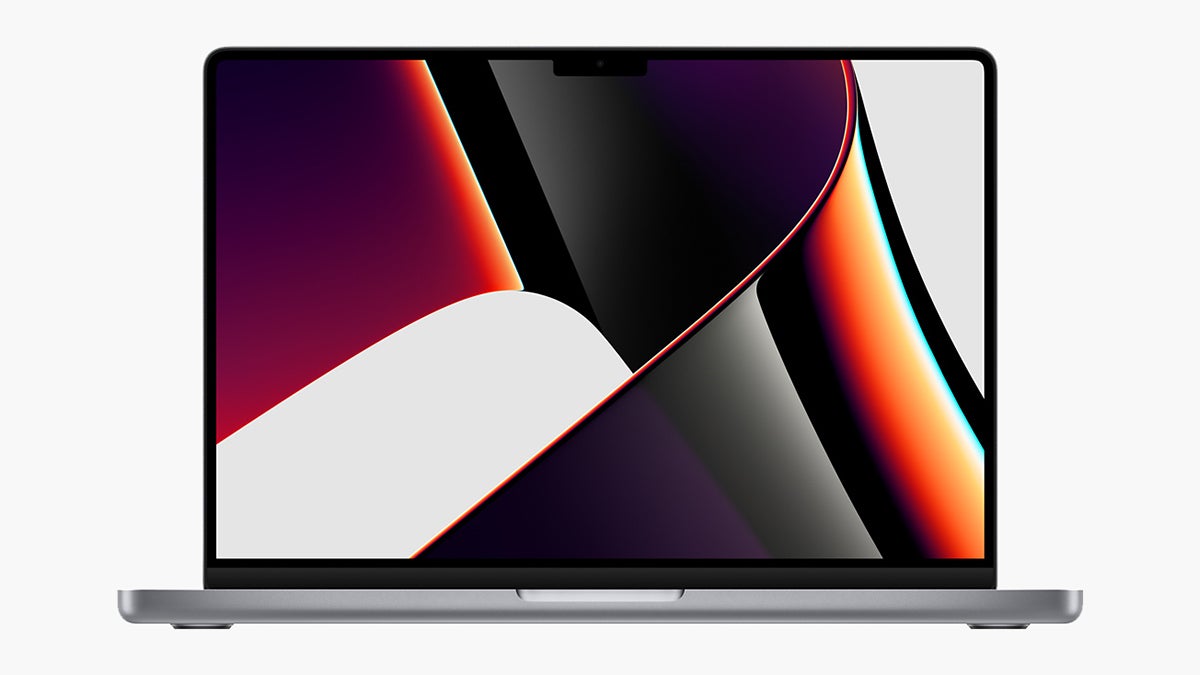
The various configurations can get a little confusing, but there are two starting options. The first gives you the 8-core CPU and 14-core GPU version of the M1 Pro, plus 16GB of RAM and 512GB of storage for $AU2,999. Dig into the system builder, and you have four other M1 Pro/M1 Max configurations to choose from, adding as much as $AU1,050. You can also go up to 32GB of RAM (add $AU600) and pick from 1TB (add $AU300), 2TB (add $AU900)), 4TB (add $AU1,800), or 8TB (add $AU3,600) of storage.
The other starting option is for a more powerful M1 Pro chip with a 10-core CPU and a 16-core GPU, together with 16GB of RAM and 1TB of internal storage — that’s yours for $AU3,749. There are fewer upgrade options here, but they top out at a 10-core CPU and 32-core GPU M1 Max (add $AU600), 64GB of RAM (add $AU1,200), and 8TB of storage (add $AU3,300). The best 14-inch MacBook Pro will set you back a tidy $AU8,249).
16-inch MacBook Pro (2021)
And so to the biggest and most popular MacBook Pro on the planet at the moment. As with the 14-inch model, you can get the 16-inch version with various M1 Pro chip configurations, topping out at a 10-core CPU, 16-core GPU and 16-core Neural Engine variant. You can also opt for the M1 Max chip instead, which goes up to a 10-core CPU, 32-core GPU, and 16-core Neural Engine in terms of specs.
Apple’s stats show the 16-inch MacBook Pro offering 2.1x better CPU performance over its Intel predecessor, but that’s just one number out of many that is listed. When it comes to the display we’re looking at a 16.2-inch, 3456 x 2234 pixel resolution panel (254 pixels per inch) and 1,600 nits of peak brightness (plus, of course, that notch). That bigger screen means dimensions of 14.01 inches x 9.77 inches x 0.66 inches and a weight of up to 2 kg.
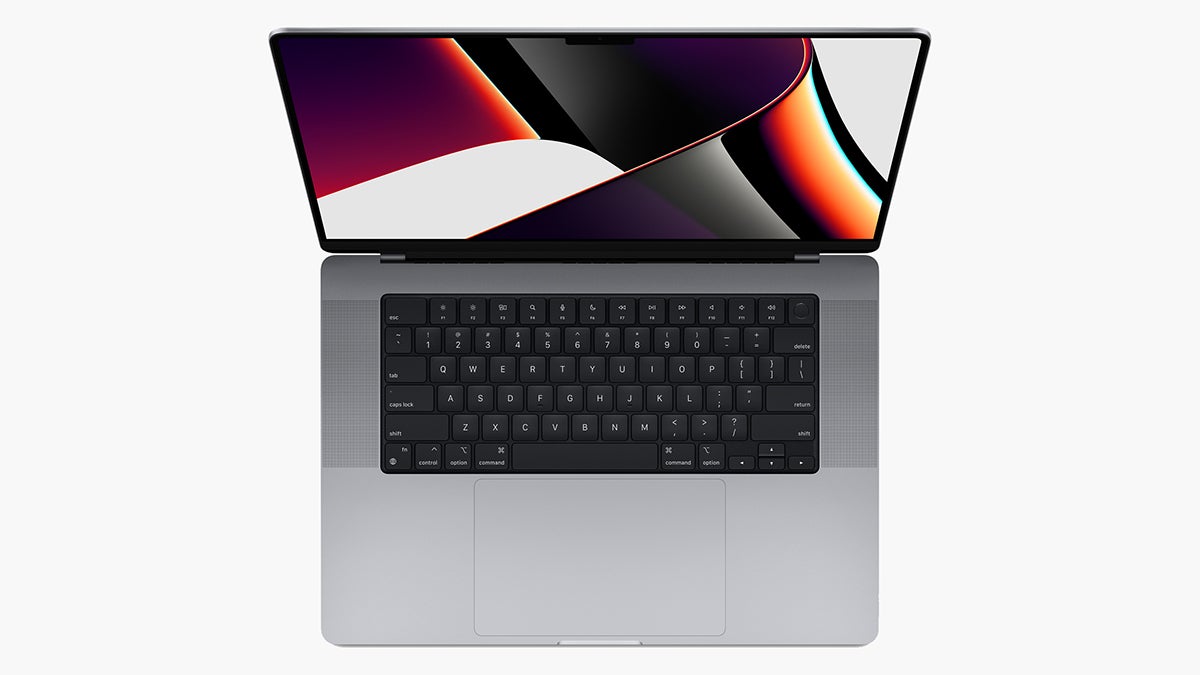
The ports are exactly the same as the 14-inch model: a headphone jack, an HDMI port, an SDXC card slot, a MagSafe port for charging the laptop, and three Thunderbolt 4/USB-C ports. The 16-inch MacBook Pro with the M1 Pro inside can power two external displays (up to 6K/60Hz); with the M1 Max it can stretch to three external displays (up to 6K/60Hz) plus another 4K/60Hz screen too. There are six speakers with Dolby Atmos support, and the colour options are silver and space grey.
Like the 14-inch version, the display’s notch has a 1080p webcam inside it (a welcome upgrade from 720p). The support for Wi-Fi 6 is the same, too. Apple promises up to 21 hours of battery life between charges out of the 16-inch MacBook Pro, which means it leads the field in that particular metric.
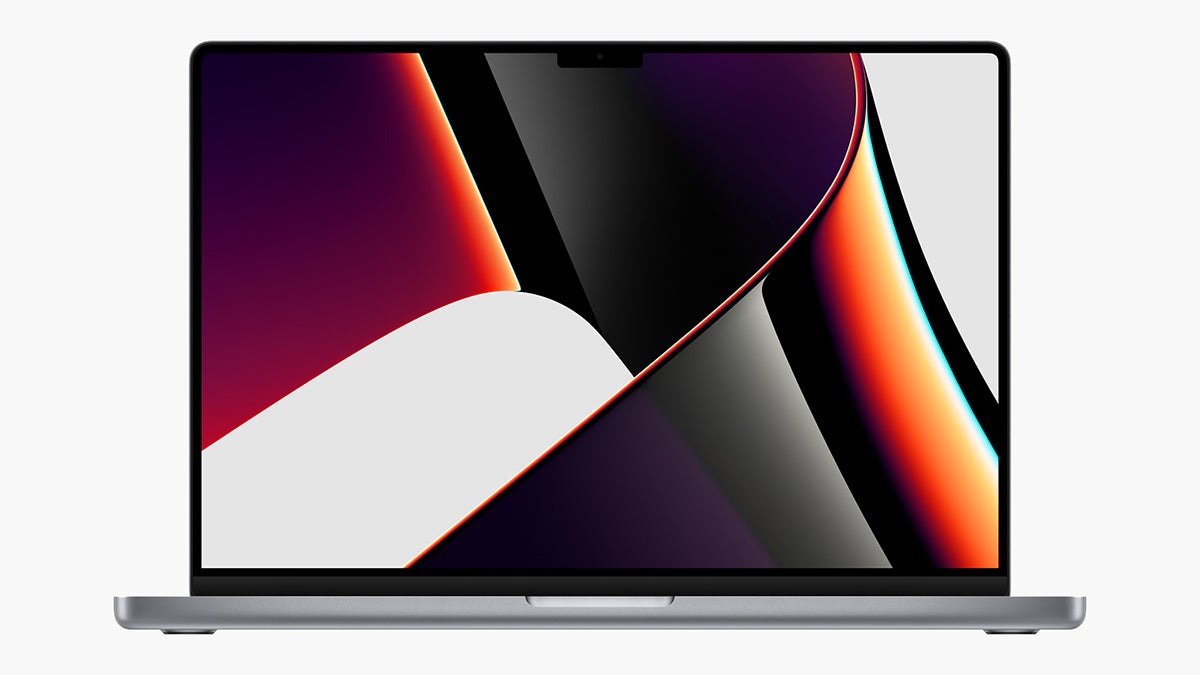
Configuring a 16-inch MacBook Pro has three possible starting points. The first two are very similar: a10-core CPU, 16-core GPU M1 Pro system with 16GB of RAM and either 512GB $AU3,749 or 1TB $AU4,049 of storage. Click through to the configuration options and you can upgrade the CPU (up to the best M1 Max for an extra $AU600), the memory (up to 64GB for an extra $AU1,200), and the storage (up to 8TB for a substantial $AU3,600).
For those with the deepest pockets, you can start off with a top-end 10-core CPU, 32-core CPU M1 Max model, with 32GB of RAM and 1TB of storage, for $AU5,249. You get a similar set of upgrade options: 64GB of RAM is another $AU600, while you can also get 2TB ($AU600 more), 4TB ($AU1,500 more) or 8TB ($AU3,300 more) of storage. The most powerful, most expensive 16-inch MacBook Pro will set you back $AU9,149.
Check out our reviews of the M1 MacBook Air, M2 MacBook Air, 13-inch M1 MacBook Pro, 14-inch M1 Max MacBook Pro and the M2 MacBook Pro to get a better idea of which laptop best suits your needs. The names are the biggest giveaways, of course: The MacBook Air is the most lightweight in terms of size and performance, and the M1 Max 16-inch MacBook Pro is for those who need a lot out of their machines.
This article has been updated since it was first published.
